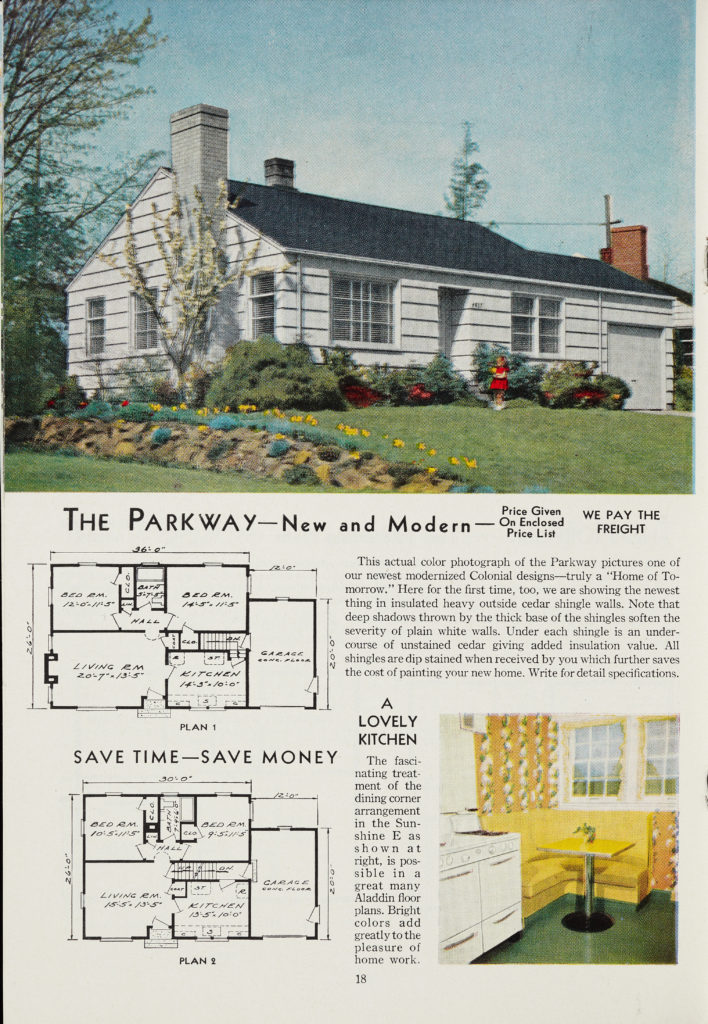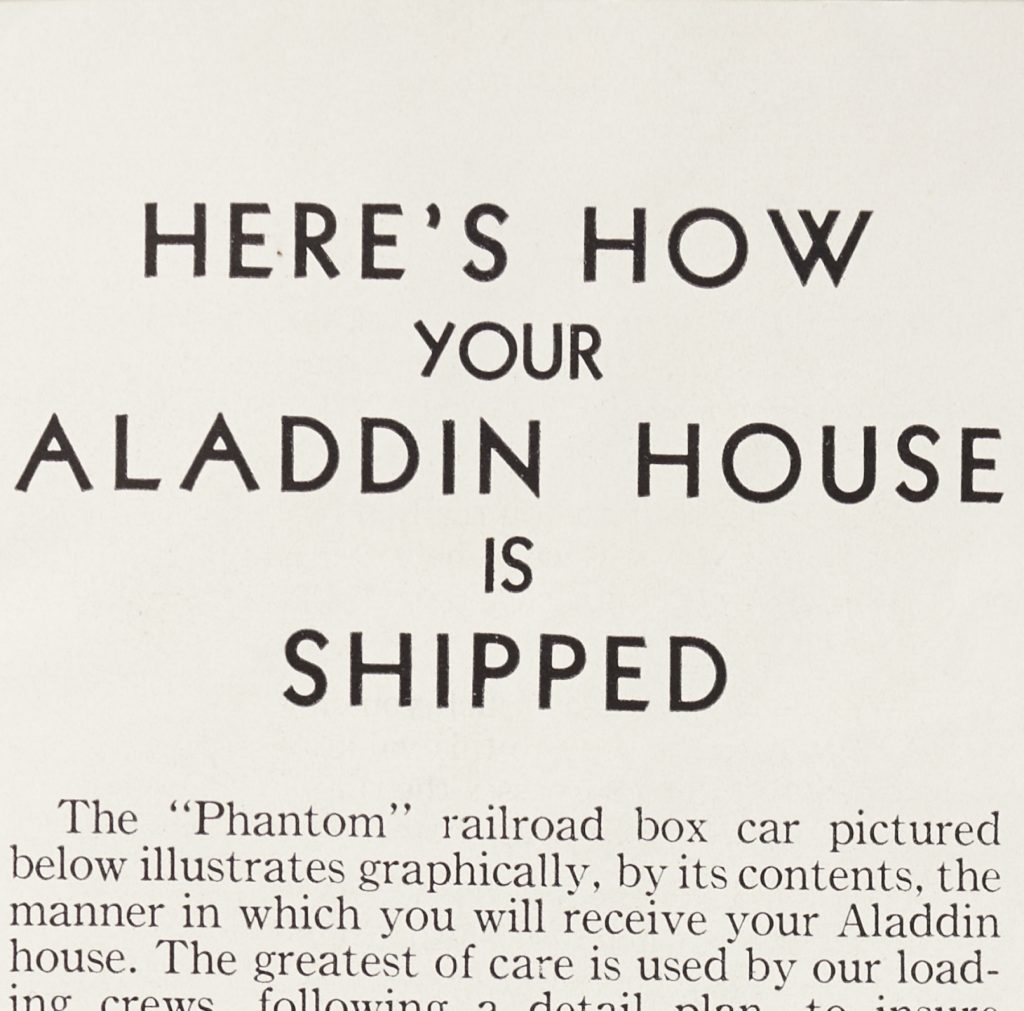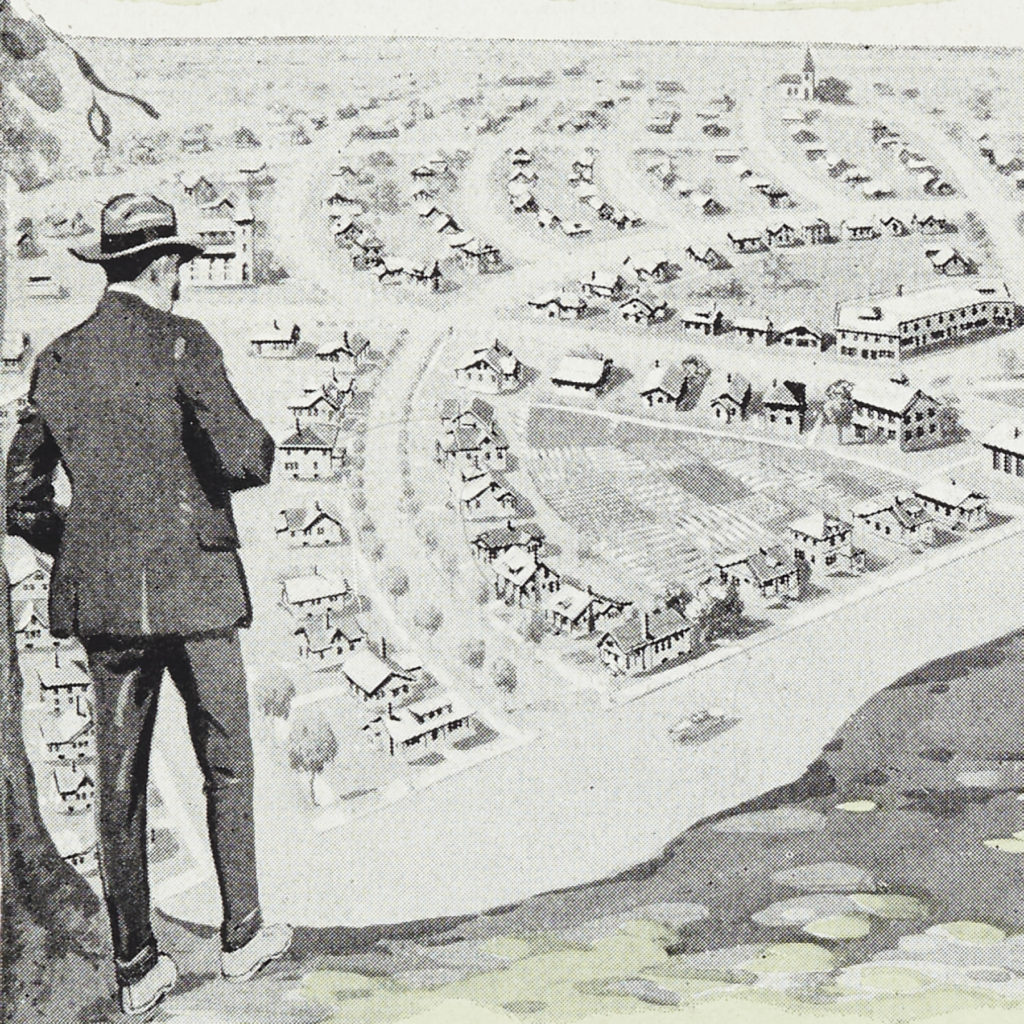 Kit Houses
Kit Houses
The Aladdin Company
1906 - 1981
In 1906, brothers William and Otto Sovereign founded the North American Construction Company in Bay City, Michigan. Inspired by a pattern-built, mail-order boat company in the Bay City area, the brothers applied the concept to houses, the first company to do so. The company’s location in the heart of a booming regional lumber industry, with ready access to railroad transportation, positioned it for success.
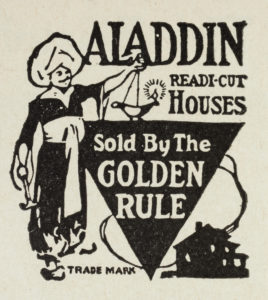
Like the auto industry, Aladdin’s manufacturing process, coined “the Aladdin System,” produced machine-made, standardized parts to reduce cost and waste and pass savings on to customers. The Ford Motor Company management’s suggestion that the company limit production to one model to simplify manufacturing fell on deaf ears. Over the course of its existence, the company produced hundreds of models ranging from the practical to the romantic.
Early kits for garages, boathouses, and summer cottages expanded to industrial and military housing and facilities, but the single-family house was the company’s bread and butter. Cottage, Bungalow, and Foursquare models were most popular for working- and middle-class customers. The small, one-story cottage was the least expensive and popular for vacation homes and worker housing. Between 1915 and 1920, the average price for an Aladdin home was $600 to $900, equivalent to $16,000 to $24,000 respectively in 2022.
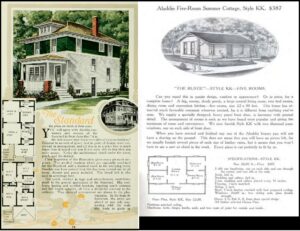
Aladdin advertisements were varied and strategic. Their earliest campaigns promoted the ease of building one of its kit houses and included testimonials from customers praising the simplicity of construction. Other advertisements offered a kit house as a solution to the difficulties of renting a home. Advertisements from the 1920s promoted purchasing a home before an automobile, a competing investment for many people.
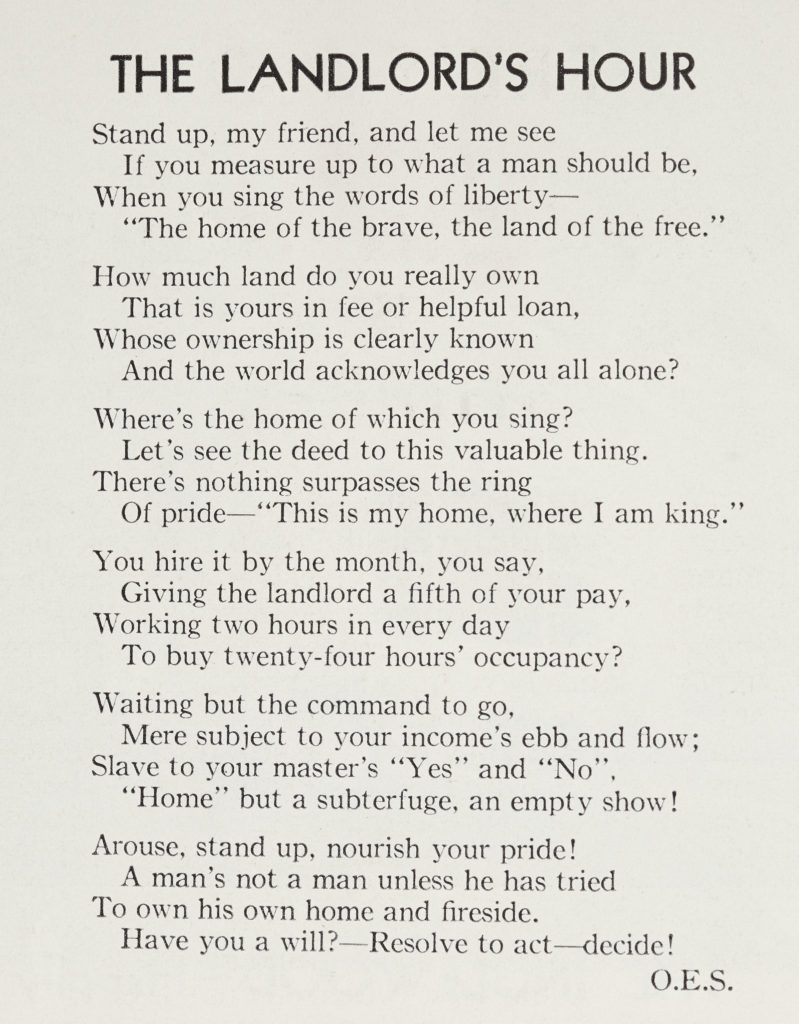

The Aladdin Company caught the attention of more than residential buyers. As early as 1908, the company advertised to mining, manufacturing, and other industries. In 1915, the DuPont company contracted with Aladdin for housing for its Hopewell, Virginia, munitions factory workers. Aladdin also enjoyed robust overseas sales. In 1917, the Austin Ford Company in Birmingham, England, ordered several hundred Aladdin houses to accommodate its growing workforce during World War I. Despite the economic challenges faced by all kit house companies following the war, Aladdin sold 2,800 houses in 1918—nearly two percent of all housing starts in the U.S. that year.
Aladdin fostered a sense of community for its customers as part of the Aladdin family. Its Department of Service answered questions and offered advice on design, landscaping, and other decisions. Its Homecraft publication featured everything for the home, from cookware and dishes to lights and plumbing fixtures.

